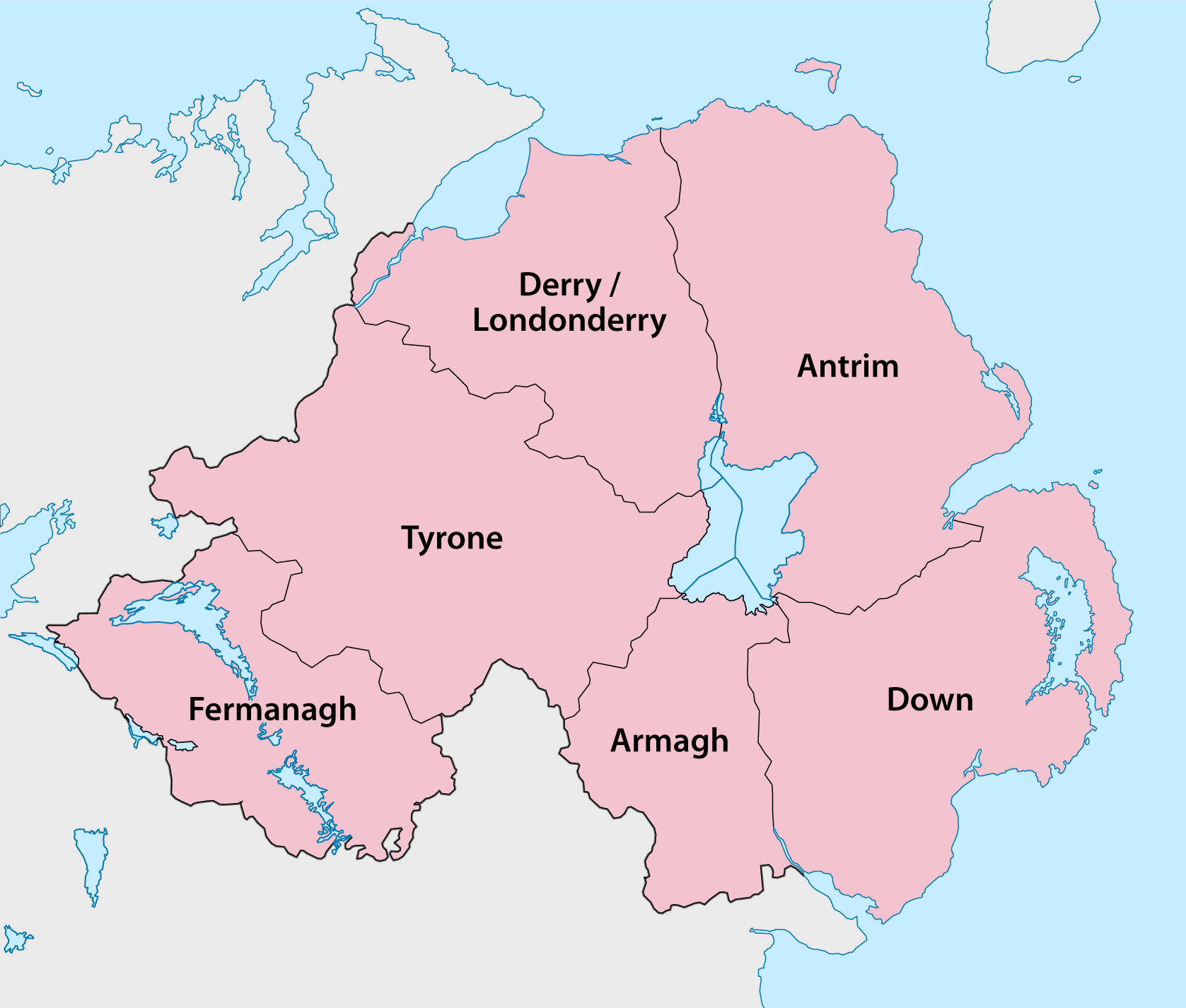Northern Ireland has six counties: Antrim, Down, Armagh, Derry/Londonderry, Tyrone, and Fermanagh. These six counties are nine of the counties found in the Irish province of Ulster.
Below we will look at what each Northern Irish county has to offer.
How Many Counties are in Northern Ireland?
Antrim
County Antrim is probably the most well-known of the six counties because within Antrim you’ll find the capital city Belfast, where the Northern Irish Assembly meets and sits at Stormont, where Titanic was built, where the national teams compete and where much of the infamous Troubles raged.
Within Belfast you’ll find a city steeped in history and heritage, with a buzzing nightlife scene, local and national sports, museums, cafe culture and everything else you’d expect from a city combining British and Irish identities.
Beyond the city limits of Belfast, you’ll find a county famed for its 9 “Green Glens”, small valleys carved by glaciers a lifetime ago, costal villages, market towns and the world famous UNESCO World Heritage site, The Giant’s Causeway.
Down
County Down is the easternmost county in Northern Ireland.
County Down features the Ards Peninsula, a long curling finger of land which stretches out from Belfast and curls around the tranquil waters of Stranford Lough. Here you’ll be able to enjoy scenic coastal drives, watersports and panoramic views around Scrabo Tower which dominates the local skyline.
Down is also known as the “Land of Saints and Scholars”. Mainly because it’s where Saint Patrick lived beyond his enslavement in Ireland, worked, and eventually got buried. If you want to follow in his footsteps, walk along the “St. Patrick’s Way”. And, if you wish to pay your respects, he is reportedly buried in Downpatrick.
Armagh
County Armagh is known locally as the Orchard County for its rolling Orchard hills and fertile soil. This includes the famous Bramley Apple – originally from Armagh (and great for cooking)! If you go to Armagh today, you’ll taste plenty of cider and may even be able to explore an Orchard or two.
Beyond that, Armagh is also famous for its city of the same name, also known as Cathedral City as it features two cathedrals.
Derry/Londonderry
County Derry or County Londonderry, depending on your preference, is primarily famous as being home to the city of the same name but the wider area features fabulous local beaches and excellent links to County Donegal in the Republic of Ireland.
In the 1960s, the city of Derry/Londonderry became a hotspot for violence and riots in the fight for Catholics to have equal rights. Today, the famous Walled City (known for its medieval walls which still stand today) still bears the scars of colonialism, but it nowadays welcomes tourists from all over the world.
Tyrone
County Tyrone is perfect for those who like to be at one with nature. The county is primarily rural and dominated by the wild but serene Sperrin Mountains.
Beyond farming and agriculture, Tyrone is famous throughout Ireland as a hotbed for Gaelic football with the men’s senior county team being one of the most successful from the northern counties, just behind County Down.
Fermanagh
County Fermanagh is famed for its lush waterways and lakelands.
As a county its primarily known nowadays as the home to the UNESCO Marble Arch Caves and the famous Stairway to Heaven walk (official name Cuilcagh Boardwalk Trail).
Why does Northern Ireland have only Six of Ulsters Nine Counties?
Ireland is divided into several provinces, and the northern province is called “Ulster”. However, visitors might find it strange that whilst three counties in Ulster are part of the Republic of Ireland, six are part of Northern Ireland (part of the United Kingdom).
However, it’s important to remember that the province of Ulster and Northern Ireland are different territories, despite overlapping.
Provinces are based on Ireland’s history with its tribes, villages, townlands, Kingships and inner conflicts. However, Northern Ireland is based on Ireland’s past relations with the United Kingdom and the partition of the island in 1921.

